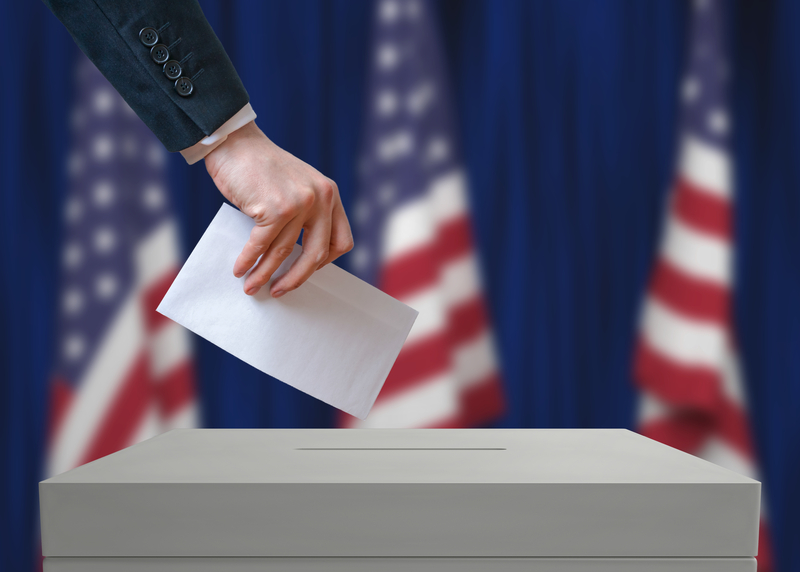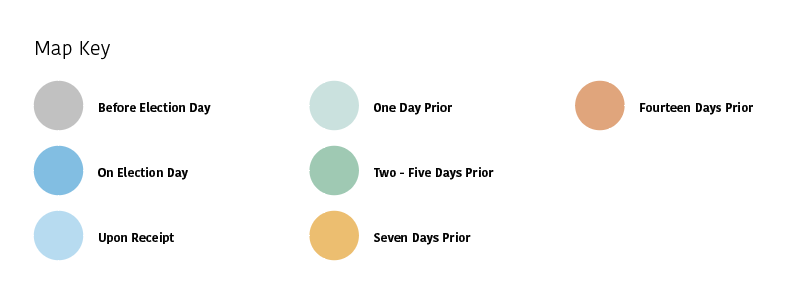
By Rachel Wright, Policy Analyst
During the 2020 general election, a surge of Americans elected to vote via absentee ballot. Now, almost three years later, many Americans can still recall the days-long wait for the race to be called. Polls had long been closed, but ballots were still being counted. Why?
In many jurisdictions, the influx of absentee ballots resulted in longer-than-normal timelines for processing and counting these ballots. This was especially true in states such as Michigan and Wisconsin that could not begin processing absentee ballots until election day. State delays in processing absentee/mail ballots can, in part, account for this delay.

What is ballot processing?
Ballot processing varies by state but generally refers to the steps taken by election officials to verify the identity of an absentee voter and prepare returned absentee ballots for tabulation. Preparation mainly consists of removing an absentee ballot from its outer envelope and properly storing the ballot for tabulation.
Absentee ballot processing begins with the verification of a voter’s identity. Unlike in-person voters, absentee voters are unable to verify their identity at a polling place prior to receiving their ballot. As such, an absentee voter’s identity must be verified when their ballot materials are received by their local election official prior to being counted.
When an election official receives an absentee ballot, the voter’s signature on the outside of their ballot affidavit envelope is compared with the voter’s signature on file to ensure a match. This process is known as signature verification. In most states, the signature on file for a given voter is taken from their driver’s license or voter registration file — both of which also require verification of the individual’s identity at an earlier point in time.
Signature verification is conducted by election officials who have been trained on a variety of handwriting analysis techniques. This includes analyzing the slant, size and proportion of letters, shape of letters, end strokes, speed of writing and an individual’s pen lifts. These same techniques are used to verify the identity of in-person voters who either sign a poll book or voter registration list to verify their identity.
Once a voter’s identity has been verified, their absentee ballot will be removed from the ballot envelope and stored with other ballots for tabulation. Although it is now ready for tabulation, election officials cannot begin counting an absentee ballot until authorized to do so. As with ballot processing procedures, the point at which election officials can begin counting absentee ballots varies by state.
What if a voter’s identity cannot be verified?
Absentee ballots may be rejected, or require curing, if the signature contained on a voter’s ballot does not match the signature that election officials have on file; however, this is rare. For example, in the 2020 general election, approximately 0.3% of all returned absentee ballots were rejected due to a signature mismatch.
In 24 states, election officials are required to initiate a cure process when a signature mismatch occurs. Ballot curing consists of notifying a voter of the discrepancy via phone, mail or email before providing them with a deadline to rectify the issue. For a mismatched signature, a voter may provide a voter ID, submit a signature verification statement, sign a verification affidavit or complete a replacement ballot. These procedures vary by state.
If a voter successfully completes the cure process, their ballot will be tabulated and included in the final tally of votes. If a voter does not complete the cure process, or if there is no cure process in the voter’s state, their ballot will be rejected and will not be tabulated.
When does ballot processing begin?
The deadline for election officials to begin processing absentee ballots significantly varies from state to state. Ballot processing timelines and procedures are delineated in statute and apply uniformly across the state. Connecticut and Ohio are the only states to allow ballot processing to begin at the discretion of local election officials.
As of October 2023:
- Thirty-eight states and the Virgin Islands allow election officials to begin processing absentee ballots before election day. These states include:
Alaska
Arizona
Arkansas
California
Colorado
Delaware
Florida
Georgia
Hawaii
Idaho
Illinois
Indiana
Iowa
Kansas
Kentucky
Louisiana
Maine
Massachusetts
Minnesota
Missouri
Montana
Nebraska
Nevada
New Jersey
New Mexico
New York
North Carolina
North Dakota
Oklahoma
Oregon
Rhode Island
Tennessee
Texas
Utah
Vermont
Virginia
Washington
Wyoming
- Nine states and the District of Columbia allow election officials to begin processing absentee ballots on election day, prior to the closing of the polls. These states include:
Alabama
Michigan
Mississippi
New Hampshire
Pennsylvania
South Carolina
South Dakota
West Virginia
Wisconsin
- Maryland allows election officials to begin processing absentee ballots at 10 a.m. ET on the Thursday following an election.





